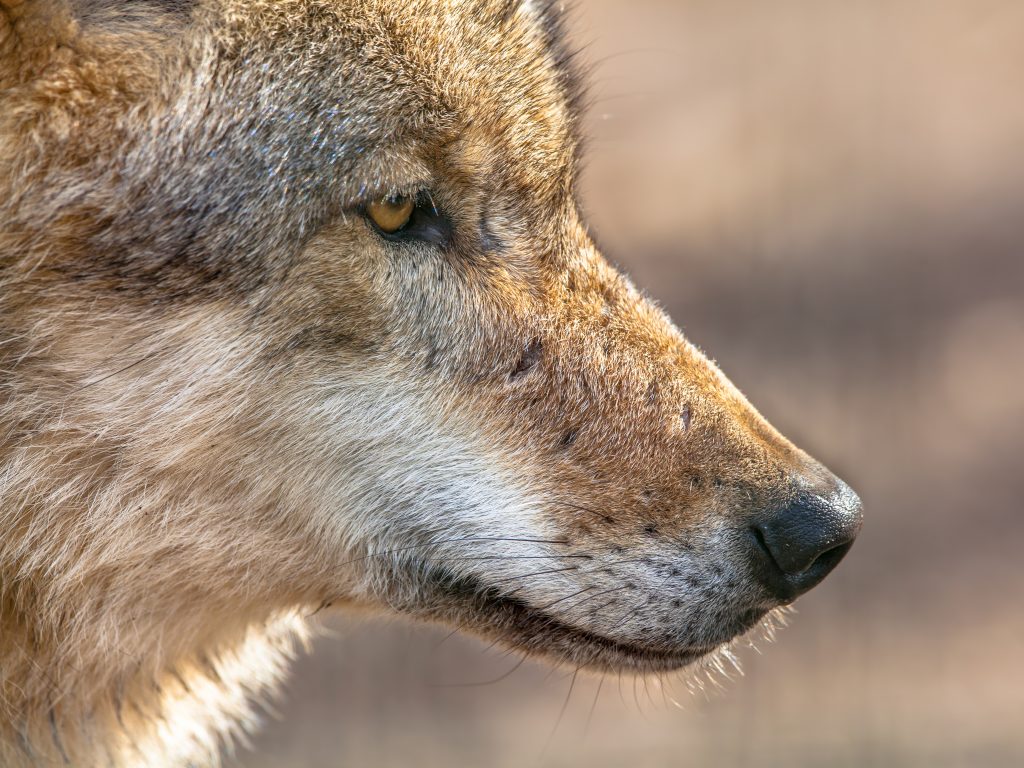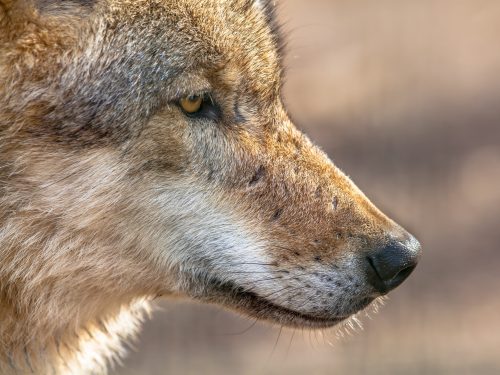You must have encountered several weird topics in your life. Then you’re the one who asks strange questions. In whatsoever case, if you’re looking for an answer to the topic, “Are wolves colorblind?”
The answer is no, wolves do not see color. Even though wolves cannot perceive as many hues as we do, they do not see the world in black and white. Wolves have dichromatic eyesight, which allows them to see variations in two hues. This article will discuss the colors that wolves can see and those that they cannot. We’ll also talk about wolves’ night and long-distance visual talents.

Are Wolves Colorblind?
First, define “color blind.” Humans classify themselves as colorblind if they have two types of cone cells. It is quite typical for animals to have two types of cones. The majority of mammal species have two cones.
So, you’re probably wondering what cones are. Cones are photosensitive cells that allow us to see colors. The color spectrum is determined purely by the number of cones. So, when we look at humans, we (typically) have three different sorts of cones that can discern between green, red, and blue color combinations. Wolves, on the other hand, have two cones.
Wolves are not fully colorblind because they can see two-color combinations. Now that we’ve debunked the misconception that wolves only see in black and white, let’s look at what colors they truly see.
What Colors Can Wolves See?
Even though wolves rely mostly on hearing and smell, sight plays a vital role in their lives. They are dichromatic, which means that their color spectrum is made up of only two hues. Humans are trichromatic, which means that our colors are made up of three different hues.
According to reports, wolves see the world mostly in blue and yellow. Other hues look identical to those two, but only in darkened variations. In other words, a wolf sees the world in yellow, blue, and grey hues.
How Many Colors Can Wolves See?
Color vision in wolves and humans is vastly different. We have a three-color vision, as do many other primates (Jacobs and Nathans 2009). Cone cells are color scheme receptors in our eyes that are roughly green, blue, and yellow.
Wolves have excellent eyesight, but it is not as good as that of other animals. In most ways, wolves’ vision is inferior to that of humans. With their eyes facing forward, wolves have a 180-degree field of view. This is common among hunters.
Because wolves are predators, they aren’t concerned about predators approaching from behind. They can instead concentrate on the prey in front of them. Hunted animals, such as deer and rabbits, have eyes on the side of their heads, making it easier to notice predators before they strike.
Are Bears and Wolves Both Colorblind?
Bears’ color vision: explained. Bears and wolves are not colorblind. While their vision is not as sharp as humans’, they can see some colors. Bears seem to have better color vision than wolves, as they can differentiate between blue and green hues. However, their ability to distinguish between other colors, like red and green, is limited. Overall, although not fully understood, bears and wolves do possess color vision to some extent.
What Does Wolf Vision Look Like?
If we talk about the vision of wolfs then Wolves can see in the dark, yes. Compared to many other species, their night vision is greater. Wolves are nocturnal creatures, therefore night vision is essential for hunting in low-light situations. Wolves have tappet lucidum, which aids in their night vision and ability to see in nearly total darkness.
But what is tapetum lucidum, exactly? It’s a reflector that sits just below the retina and returns visible light to the gentle tissue. As a result, the amount of light available at night is increased. This permits wolves and other animals, among others, to see at night.
At night, you’ve probably spotted a variety of animals with gleaming eyes. Tapetum lucidum is present in all of them. They’re all equipped with night vision. Even though they see fewer colors than humans, wolves have some visual benefits. Aside from night mode, wolves have a wider eye location than humans, allowing them to see much further. For predators like wolves, color vision is less crucial than some of these other qualities.
Diverse animals have different perspectives on the world. Only a few creatures have the same ability to see the world as we do. When we talk about the wolves, they see blue and yellow hues in various shades. They can’t see red-green colors, though. Just because wolves can’t see the entire color spectrum as well as humans, doesn’t mean they’re completely colorblind.










